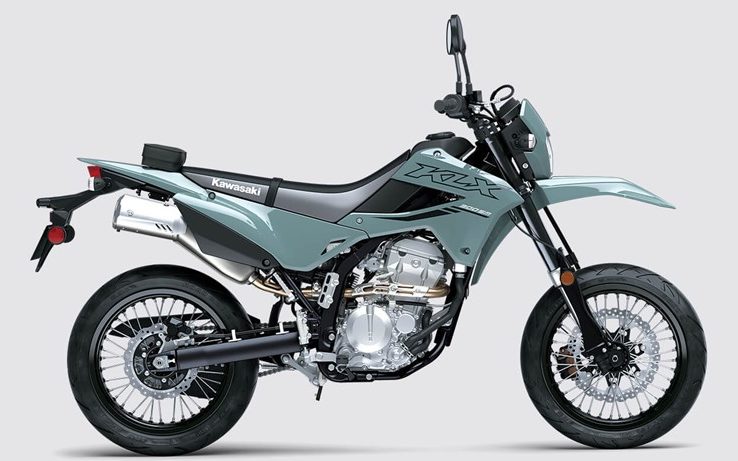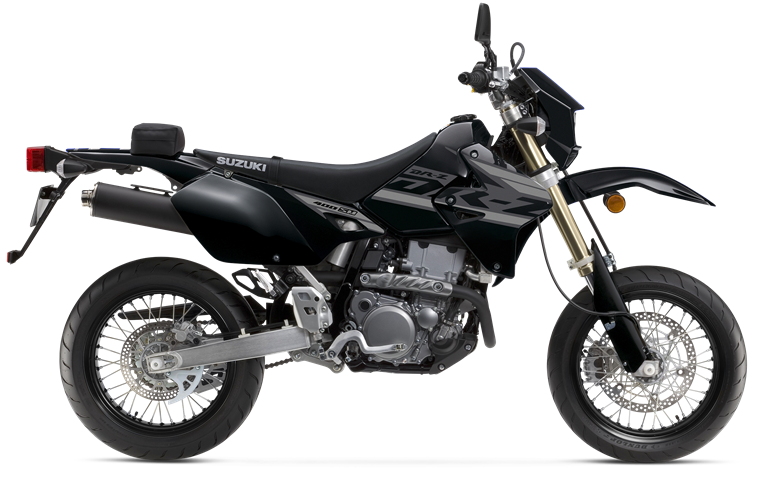Now that we have the major defining characteristics laid out from the previous article (What Defines a Motorcycle’s Feel?), we can start to compare the major types of motorcycles with a bit more context. I’ll start with the major categories of street bike covered in the rider handbook, but I’ll also include several categories that don’t fit cleanly into those buckets.
In each category, I’ll give a brief overview of the category’s defining characteristics (including potential negatives), some examples of entry level bikes and displacements, and some examples of intermediate bikes and displacements.
For this post, I’m considering intermediate bikes as mid-sized motorcycles within a class that would be appropriate for a confident, skilled beginner (recall the entry-level vs intermediate discussion in the How to Buy a Motorcycle post). Be aware that many categories will have mid-sized models which are actually performance oriented, so make sure to carefully consider the engine characteristics and geometry if you plan on skipping the entry-level models.
This is definitely not an exhaustive list of categories or bikes. I’m also not saying that these are the best options from each class, my goal is just to give you some examples to start your search and maybe introduce you to some options you might not have considered. I’ll repeat my advice from How to Buy a Motorcycle: your best bet for finding the right bike is go to a large dealership and sit on as many as you can. You don’t have to buy from there, but it’ll definitely help you figure out you feel comfortable on.
Major Categories
These are the categories of motorcycle laid out in the rider handbook: standards, cruisers, sport bikes, dual sports, and touring bikes.
Standards
Standards are hard to define, because the class includes basically everything that’s not in the other major classes. They usually have an upright riding position and relatively neutral geometry, but may be biased to be slightly more relaxed or aggressive. Standards can have basically any engine configuration, but they usually sit somewhere between the low, rumbling torque of a cruiser engine and the high-revving scream of a sport bike. They may have some bodywork, and visually they can range from classic & vintage to sleek & modern.
That may sound boring, but standards can be the perfect first bike precisely because they’re in the middle of everything else. Once you get a feel for the bike, you’ll know what you want more of and what you want to avoid when it’s time for an upgrade.
There are also a lot of sub-categories of standards that are a bit more cohesive, like sport nakeds, scramblers, and cafe racers. I’ll break those out separately after we get through the rest of the major categories.
Entry Level
Because you can find such a variety of engines and specs of standards, it’s hard to pin down a cut-off for entry level vs intermediate, but I’d start with something less than 500cc and either a single or a twin cylinder engine.
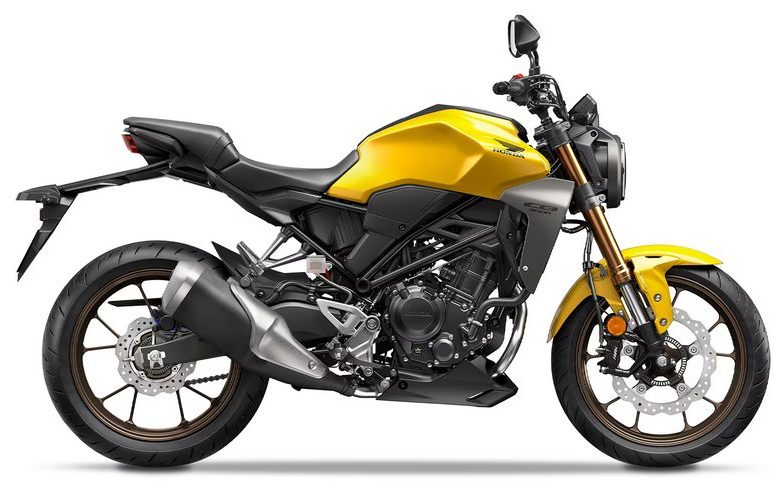
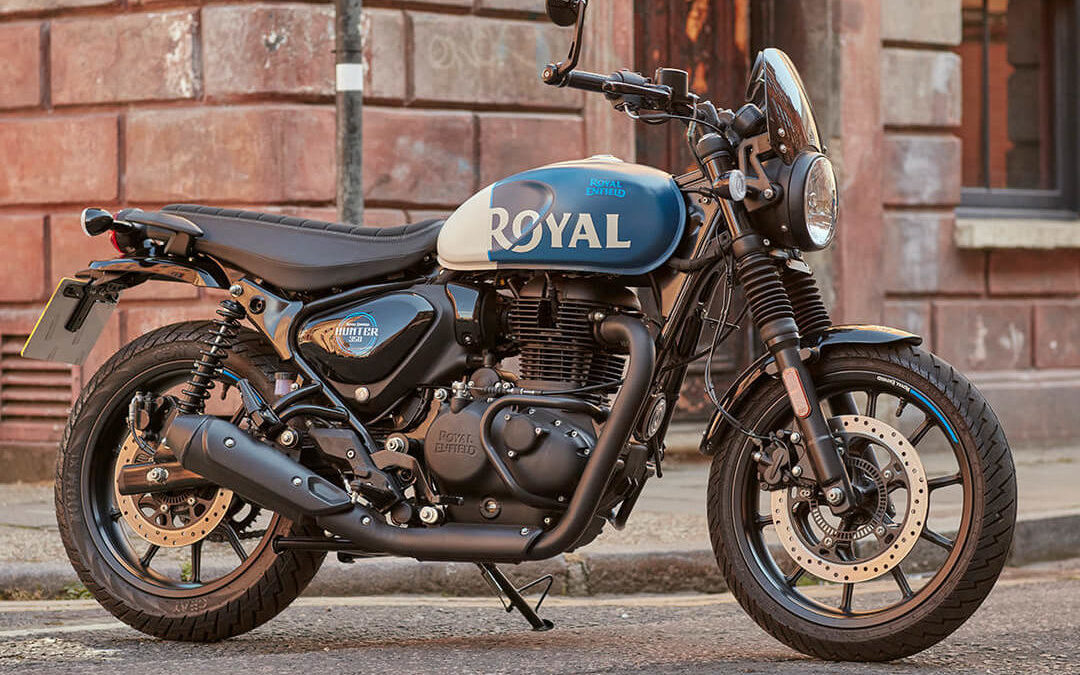
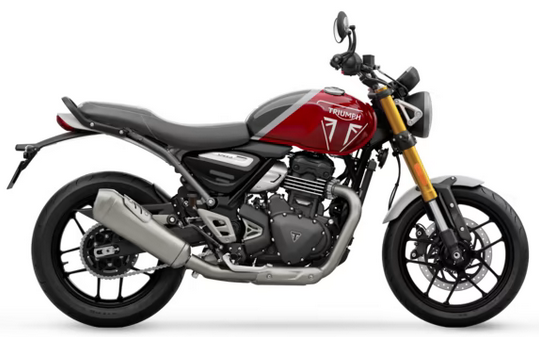
Intermediate
For an intermediate standard, I’d look for a bike with less than 900cc and a max of three cylinders.
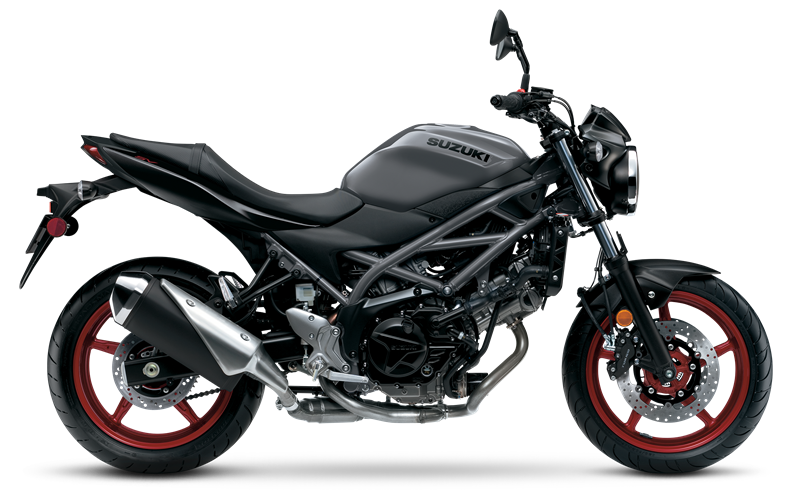
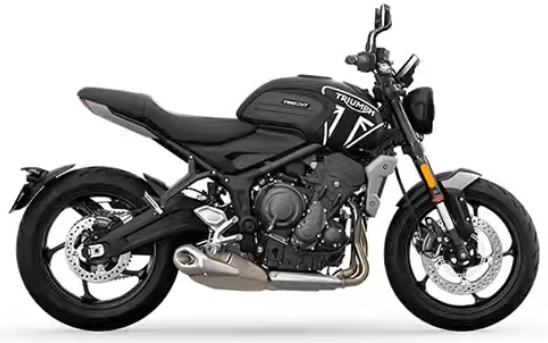
Cruisers
Cruisers are the most popular type of bike in the US. Cruisers have a low seat & feet-forward riding position and tend to have shallow rake angles with lots of trail. Their engines are almost exclusively V-twins (though the occasional parallel twin shows up) tuned to produce lumpy, low-RPM torque, but they don’t rev high and produce relatively low power for their weight (at least compared to other motorcycles). All of this combined creates a relatively relaxed riding experience, making them very approachable. Visually, cruisers maintain a “classic” styling with no bodywork and a vintage design language.
What’s the downside? Despite the low center of gravity, cruisers tend to be quite heavy. The overall geometry means that the average cruiser has quite a large turning radius, low cornering clearance, and requires quite a lot of input from the bars for swerves & tight turns. If you’re a performance-oriented rider they’re likely not for you.
Entry Level
Entry-level cruisers have engines below 500cc, weigh less, and tend to have low seat heights. Neither Harley nor Indian make entry-level cruisers, so you’ll need to look to the Japanese manufacturers for a metric cruiser.
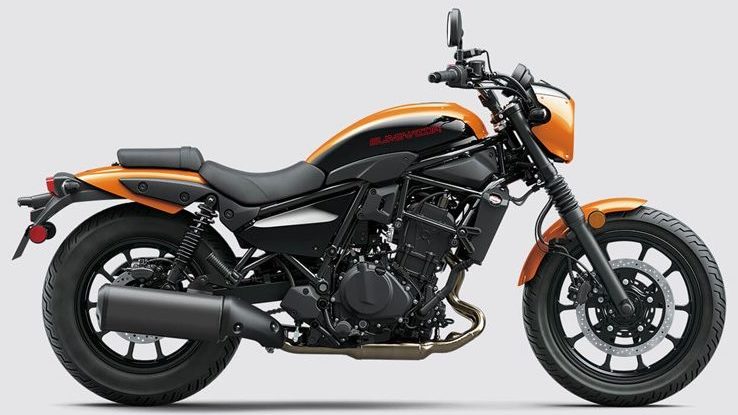
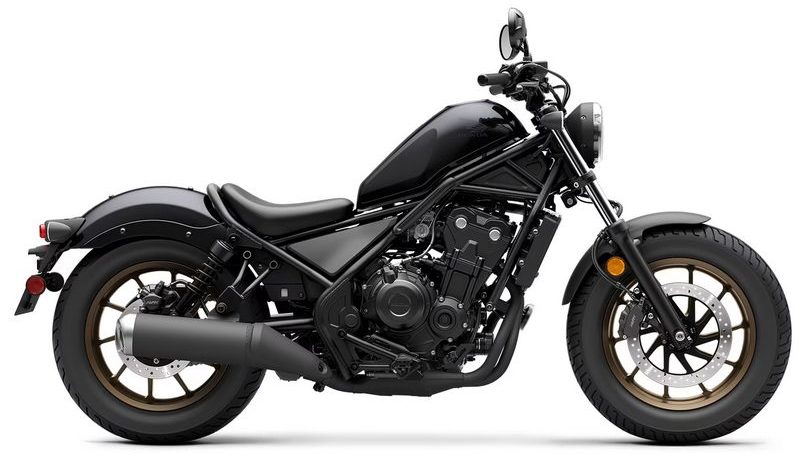
Intermediate
For an intermediate cruiser, I’d aim for something between 500cc and 1,000cc. There are several metric cruisers in this range; Harley recently discontinued their Iron 883, but you can probably still find them in showrooms (and used Sportster 883s are abundant).
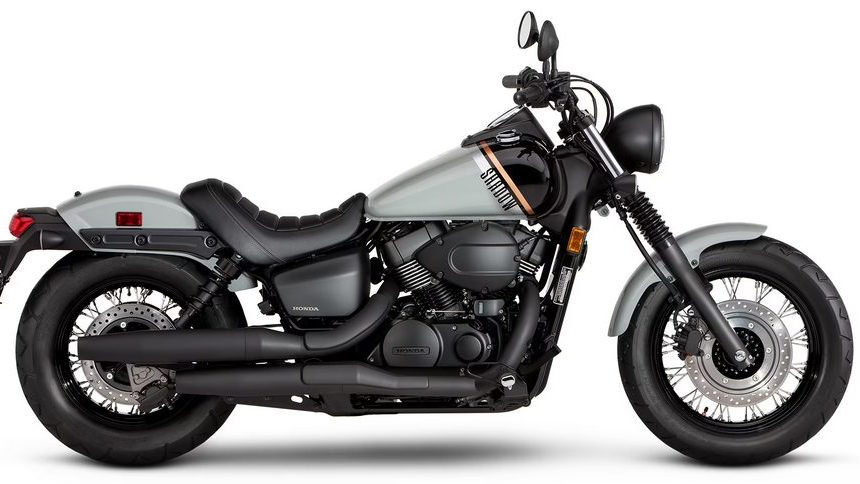
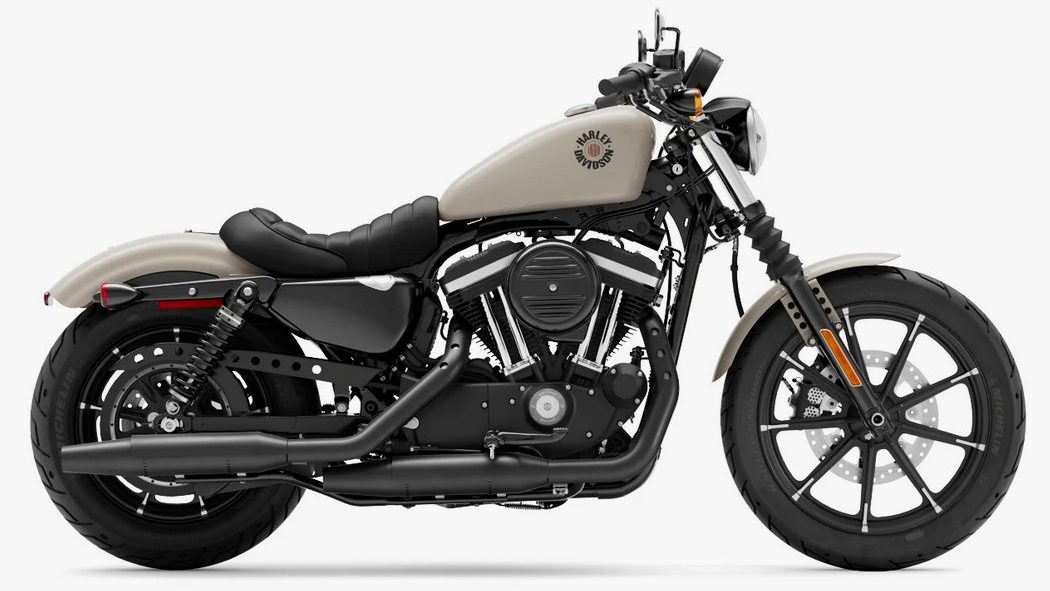
Sport Bikes
The opposite end of the spectrum from cruisers, sport bikes feature aggressive, forward leaning riding positions and steep rake angles for responsive steering. Sport bikes can range from relatively mild, commuter-oriented street bikes to hyper-aggressive track weapons that happen to have license plates. Sport bikes come with a variety of engines including twins (both V and parallel), triples, and four cylinder (both V and inline), and tend to be tuned to produce their power higher in the rev range. Visually, sport bikes are defined by their aerodynamic bodywork.
Because of their responsiveness, sport bikes can feel twitchy and unstable at lower speeds. Their engines are generally designed to produce maximum power when you’re well into the throttle and have relatively little torque at low RPMs, which can lead to jerking and stalling if you’re not careful with your clutch work. Their plastic bodywork is also easy to crack and expensive to replace if you have a tip over, and the aggressive riding position can lead to fatigue on longer rides. Many insurance companies also charge increased premium for a sport bike.
Entry Level
Sport bikes designed for beginners have engines with displacements less than 500cc and a single or twin cylinder engine (there are performance oriented sport bikes with small engines that are not designed for beginners, like the Kawasaki Ninja ZX400RR). A good entry-level sport bike will have a more relaxed riding position and more forgiving throttle response.
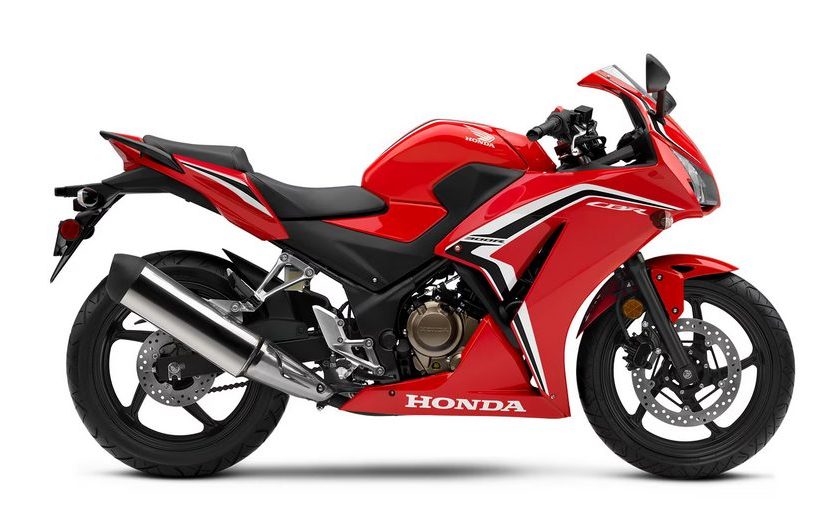
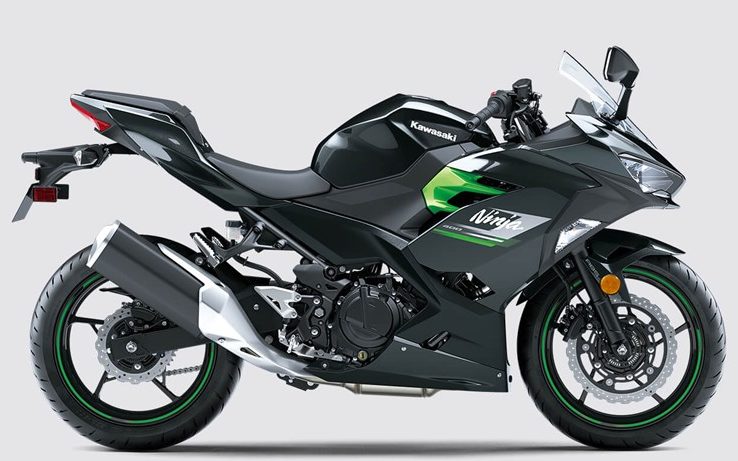
Intermediate
Choosing an intermediate sport bike can actually be a little tricky, but generally you’re looking for bikes in the 500-800cc range. The rules from entry-level sport bikes still basically apply for intermediate: look for something designed for street riding, a two-cylinder engine, more relaxed riding position.
Manufacturers will generally separate out “sport bikes” designed for the street from “supersport bikes” designed for the track. Supersports are more likely to be four-cylinder engines, have much more aggressive riding positions & throttle response, and are absolutely not designed for new riders. They’re much more difficult to control, will likely be frustrating to try to learn on, and younger riders will pay a steep insurance premium.
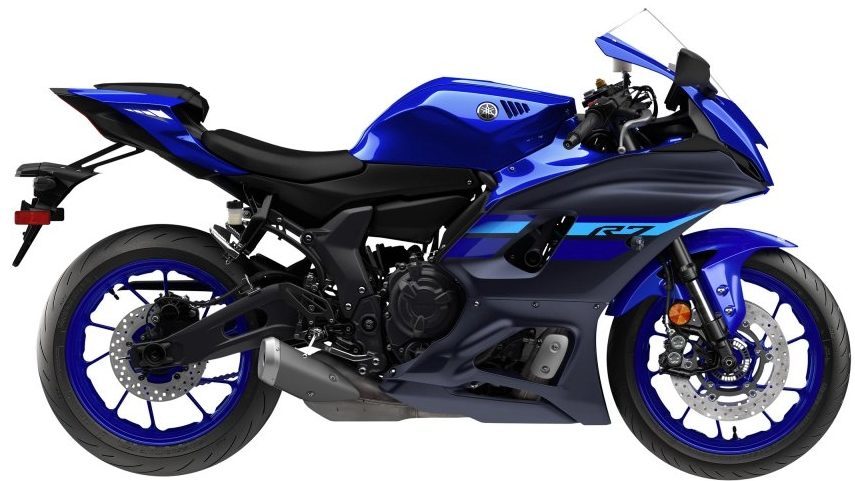
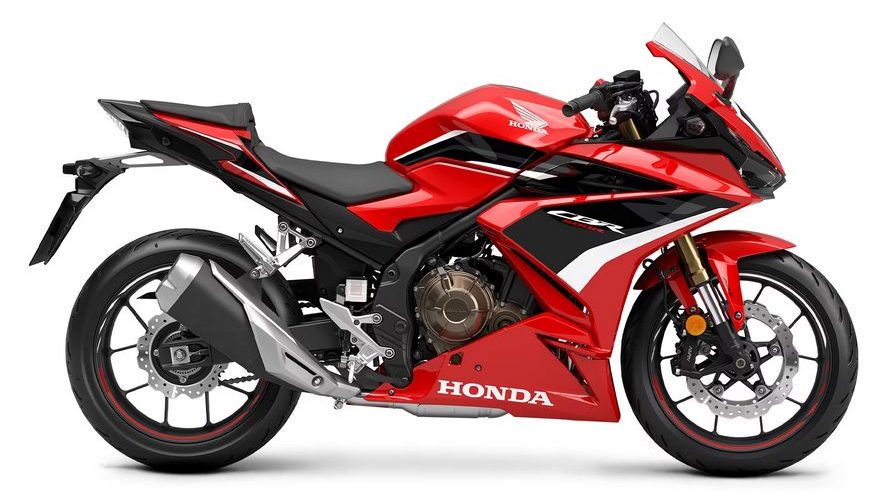
Dual Sports (or Dual Purpose)
For dual sports, manufacturers start their designs from dirt bikes and add components to make them street legal (license plates, headlights, turn signals, mirrors, and a horn). They have long-travel suspensions and high ground clearance to deal with rough terrain, giving them relatively high seat heights. Dual sports almost exclusively have single cylinder engines to keep the weight down, and limited plastic bodywork that’s intended to protect fragile components like radiators.
Dual Sports have an upright seating position and their rake is relatively neutral to balance responsiveness on tight tracks with stability in the rough stuff. Most dual sports also have a forward-offset front wheel to further increase trail for stability when the wheel hits obstacles riding off-road.
For the purposes of this post, I’ll discuss adventure bikes as a separate category. The features that make dual sports ideal for riding off-road also make them great bikes for cities — the tall seat height means you can see over traffic, and the suspension can soak up potholes like they aren’t even there.
Overall the lower weights, neutral handling and upright seating position makes Dual Sports great beginner bikes, but the tall seat heights can make them intimidating for shorter riders. Their single cylinder engines and short gearing are designed for riding off-road, so while they accelerate quite quickly, top speeds are limited and they tend to vibrate or buzz when the throttle is pinned.
Entry Level
For an entry level dual sport, I’d aim for a bike with up to 300cc and a relatively low seat height (there are performance oriented dual sports with small engines that are not ideal for beginners, like the KTM EXC 250).
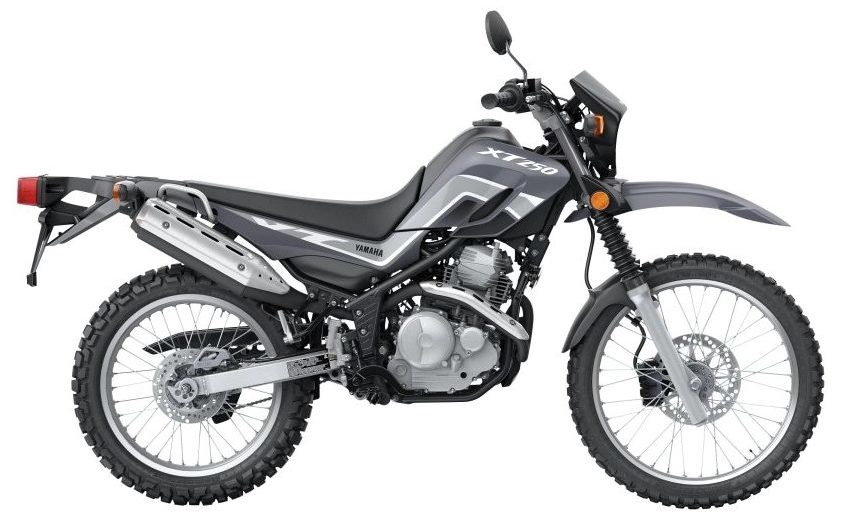
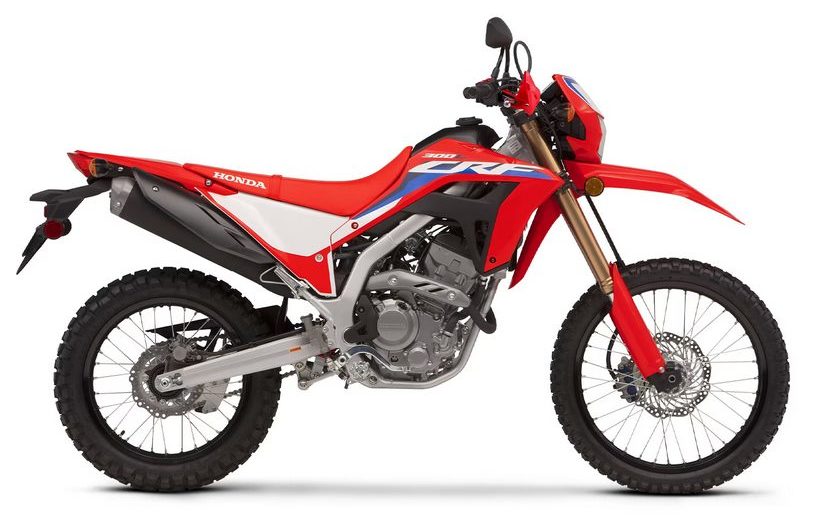
Intermediate
Similar to sport bikes, the intermediate level of dual sports can be a bit tricky because of competition-focused bikes that share engine sizes with more casual models. As a class, dual sports generally have smaller engines to keep weights down. Most intermediate riders will continue to be happy with a 300-400cc bike off-road, but may step up to a bike with better suspension and more ground clearance. There’s also a trio of 650cc classics (the Suzuki DR650, Kawasaki KLR650, and Honda XR650L) which are still fairly capable off-road but offer more street comfort.
Unless you have a lot of experience with dirt bikes or motocross, I’d avoid the performance-oriented dual sports (KTM, Husqvarna, Beta, Gas Gas, etc. and the Honda CRF450RL) as a first bike, even for an intermediate rider.
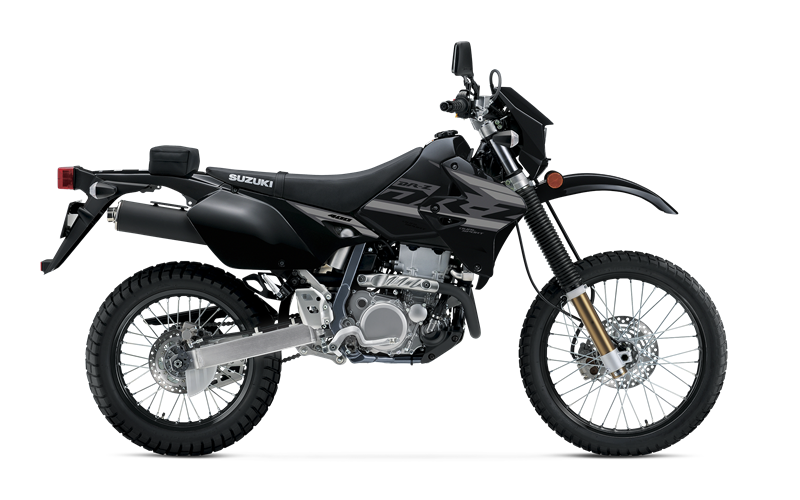
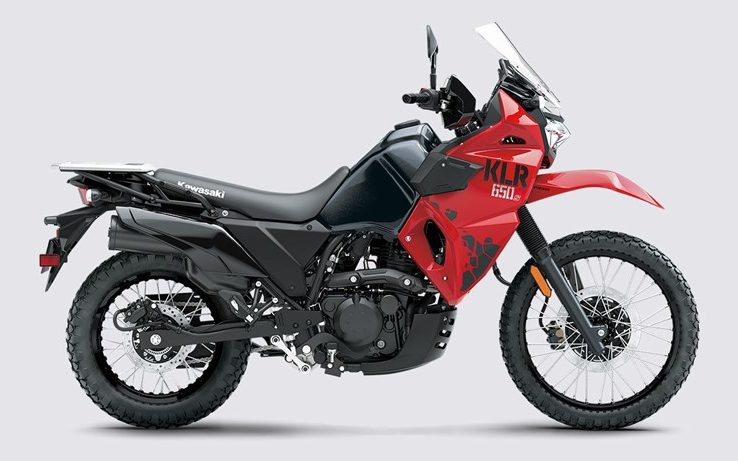
Touring Bikes
I hesitate to include this category in a post for new riders, but it’s in the Rider Handbook so I will at least mention it. Because they’re designed for long-distance highway travel with luggage and passengers, touring bikes are physically large and tend to have high-displacement engines. Touring bikes can be purpose-built for road touring, but there are also crossover categories like baggers & dressers (based on cruisers), sport tourers, and adventure tourers.
I will have sections for sport touring and adventure bikes below because there are some reasonable beginner (or at least intermediate) bikes for those sub-categories, but I cannot recommend a full-sized touring bike or bagger/dresser to any beginner.
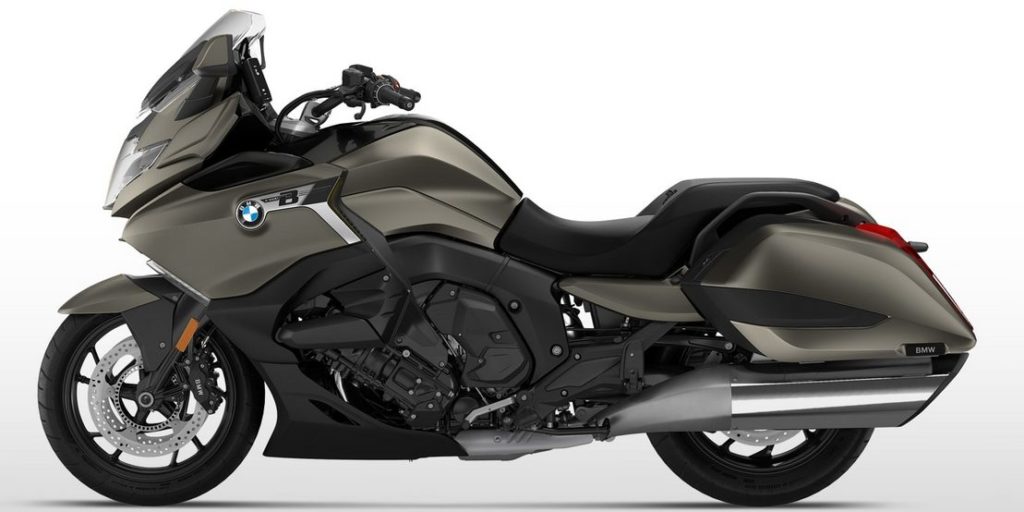
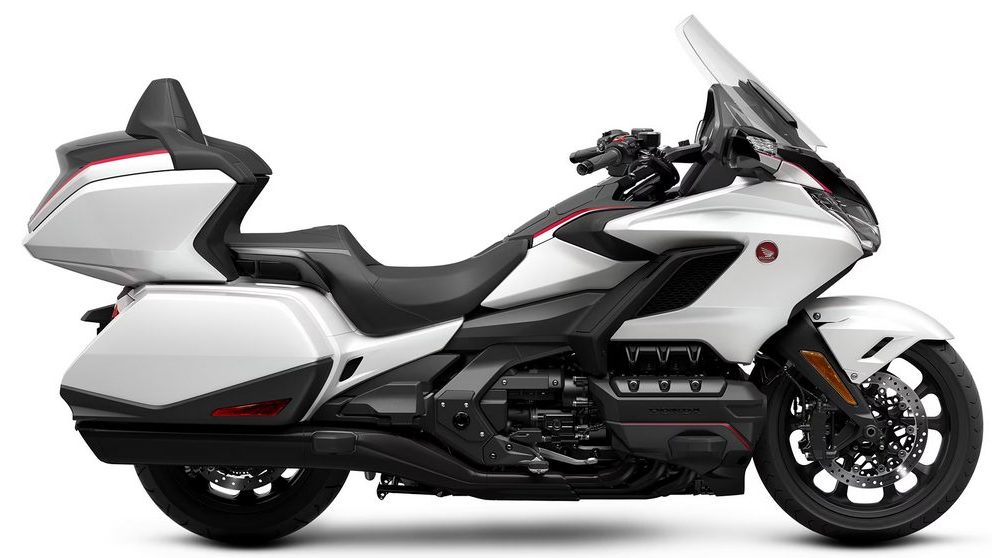
Notable Sub-Categories & Crossovers
These categories are either specializations or hybrids the mix the features of the major categories.
Adventure Touring (ADV)
Adventure bikes are the fastest growing segment of motorcycles, and have been for many years. Where dual sports are dirt bikes with street bike additions, adventure bikes are street bikes that have been given some dirt capability. Most often, manufacturers will start with a sport touring bike and give it a long-travel suspension, more ground clearance, bigger wheels, and re-tune the engine to be more manageable off-pavement. They tend to have two or three cylinder engines, but there are a few entry-level singles.
Adventure bikes are designed for long trips that include both pavement and off-road riding, but most adventure bikes are better suited for one or the other (off-road biased ADVs will usually have 21″ front wheels, while street biased ADVs will have 19″). Even the most capable ADV bike will be less capable off-road than a dedicated Dual Sport, but that’s a trade-off for better street manners.
“Adventure Sport” bikes are also becoming more common. They often borrow four cylinder engines and 17″ front wheels from sport bikes, trading off-road capability for sportier street performance. These are really just sport touring bikes an upright seating position and taller suspension, but that can come in handy on rough roads or to see over traffic.
In my opinion, ADV bikes are the most versatile category of motorcycles. They are slower & less agile than a sport bike, less comfortable than a touring bike, and less capable & heavier off-road than a dual sport, but no other class of motorcycle can do all of those things — and in many cases do all of them quite well. Because of their versatility, adventure bikes also make great commuters and general-purpose bikes. Personally, if I could only own one motorcycle it would be an adventure bike.
All that being said, there are some downsides. ADV bikes tend to be tall and top heavy, so shorter riders may have a hard time (though lowered versions of several popular models are available from the factory). Manufacturers sometimes overcharge for ADV bikes & accessories because of their popularity, and large-displacement ADV bikes have become flagship motorcycles for many brands (meaning you might pay for electronics and other features you don’t necessarily need).
Entry Level
For an entry level adventure bike, aim for something at or below the 500cc mark with a manageable seat height.
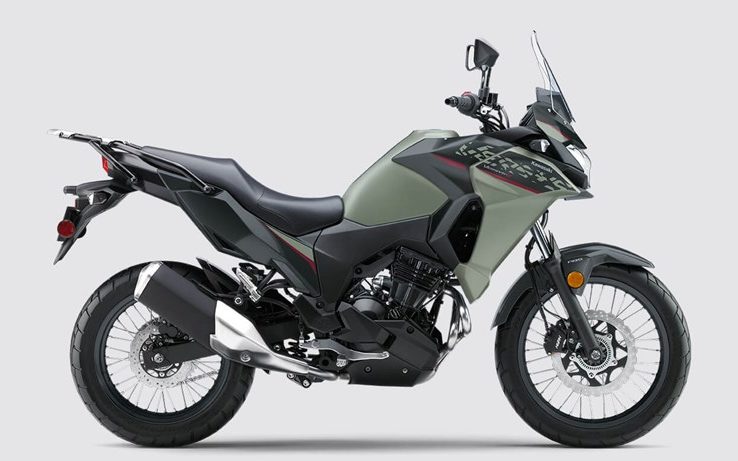
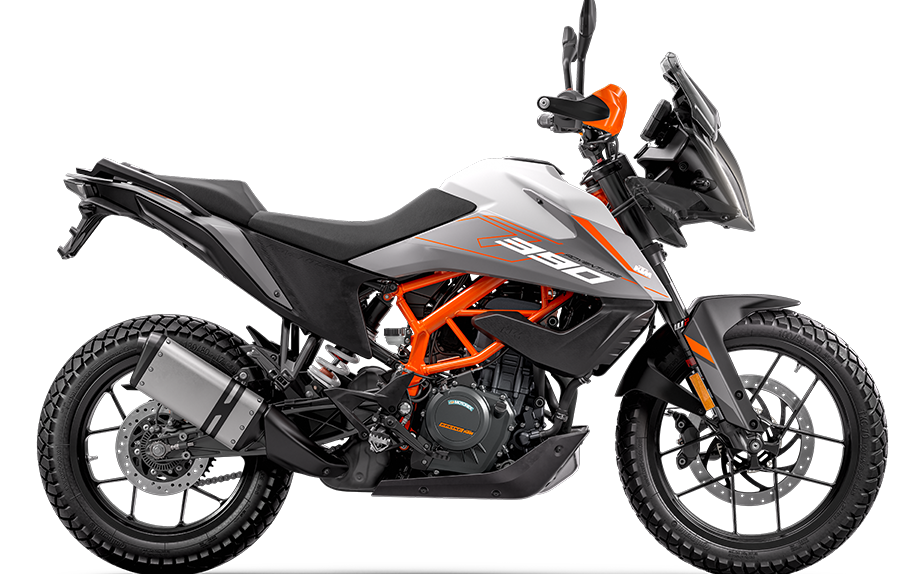
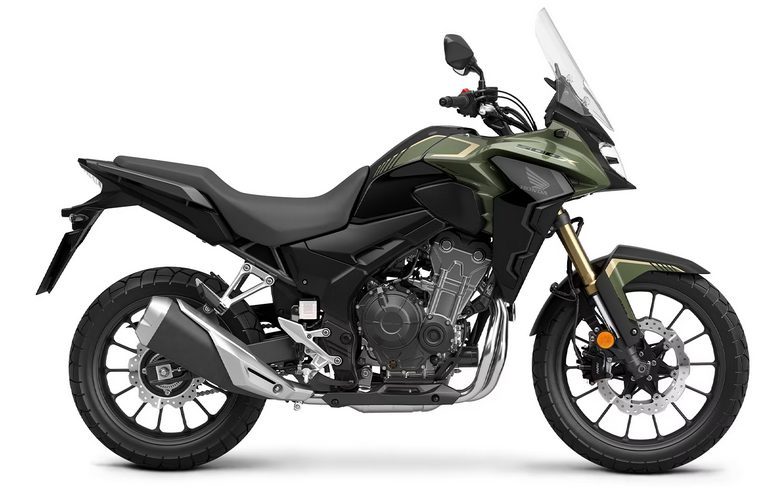
Intermediate
Intermediate ADV bikes will be less than 1000cc, and you will likely see a corresponding increase in seat height and suspension travel.
Mid-sized, performance oriented adventure bikes are starting to become more popular (like the KTM 890 ADV, Triumph Tiger 900 Rally Pro, Yamaha Tenere 700, & Aprilia Tuareg 660, Ducati Desert X). Just like with sport bikes and dual sports, these mid-sized bikes are designed for experienced riders looking to save weight for increased performance and wouldn’t necessarily make great first bikes.
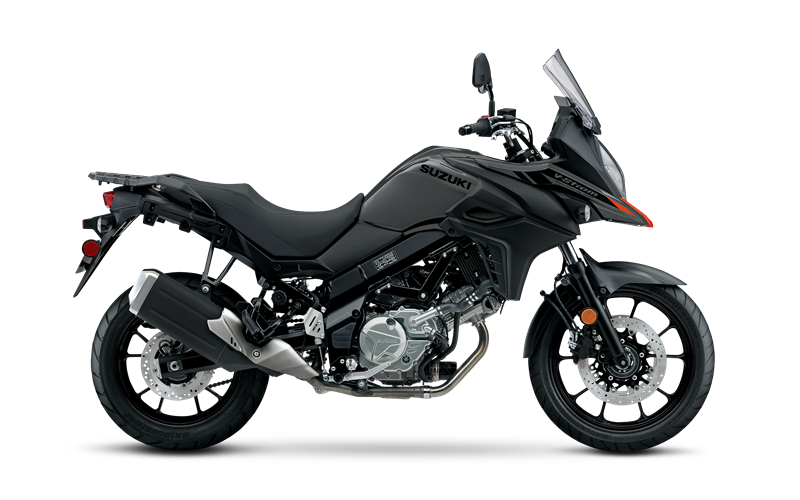
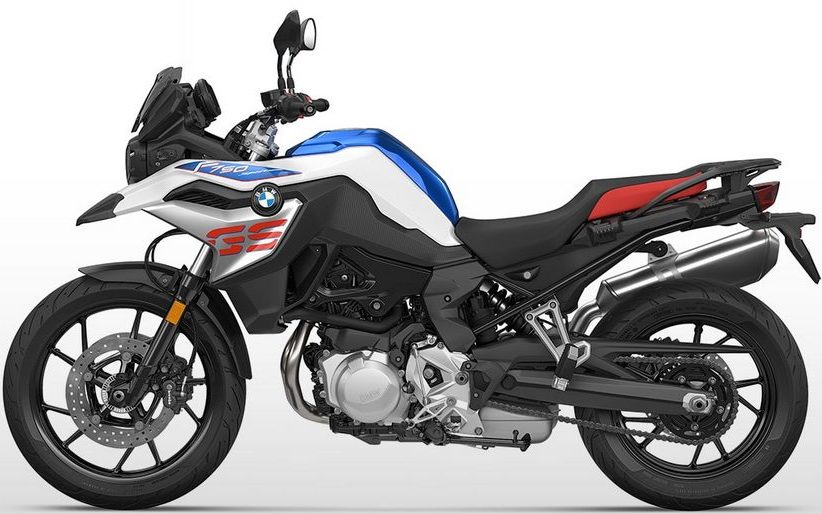
Sport Touring
Combining sport bikes with touring bikes gets you a sport touring bike. While this category has largely been supplanted by road-biased adventure touring bikes, there are still a few dedicated sport-touring bikes. Manufacturers generally take their sport bikes, add a luggage platform, create a more relaxed riding position, and tune the engine for better fuel efficiency and smoother throttle response.
There aren’t any entry-level sport touring bikes as far as I know, but an entry-level road-biased ADV like the KTM 390, BMW 310, Honda CB500X, or Kawasaki Versys 300 would be a good choice.
Intermediate
For a confident beginner, a good intermediate sport tourer would be in the sub-1000cc range and have a more upright seating position. A mid-sized road-biased adventure bike would also be great here, like the Triumph Tiger 900 GT.
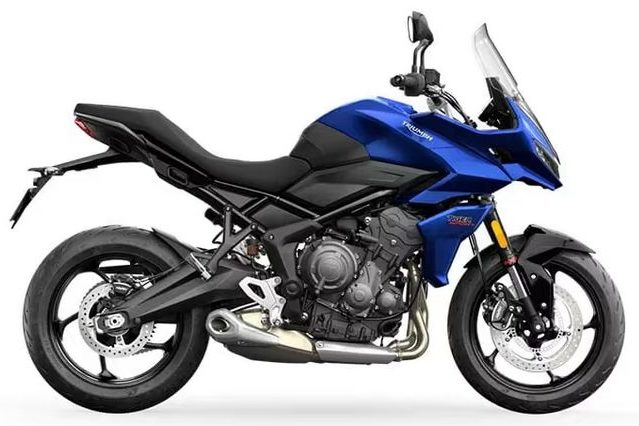
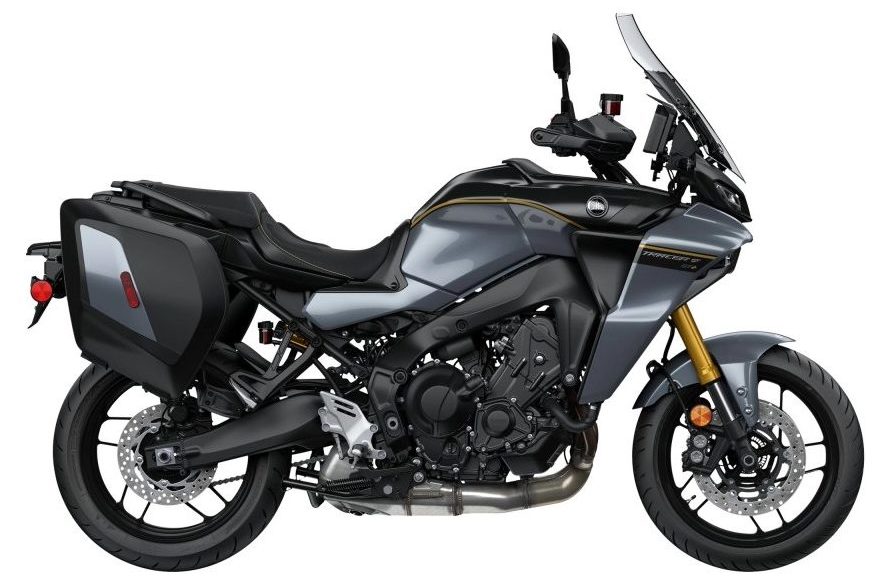
Sport Nakeds (Streetfighters)
The sport naked category began as streetfighers in the 80s & 90s, when riders would take a crashed sport bike, rip off the plastics, add an MX-style handlebar, and keep riding. Modern sport nakeds are generally considered standards, but are closely related to sport bikes.
For modern sport nakeds from the factory, manufacturers take a popular sports model, give it a more upright seating position, and remove most of the plastics. While they usually feel a bit more relaxed in terms of ergonomics, sport nakeds have very similar power and handling characteristics to sport bikes.
Entry Level
Just like sport bikes, look for an entry-level sport naked with a <500cc engines, 1-2 cylinders, and a relaxed riding position.
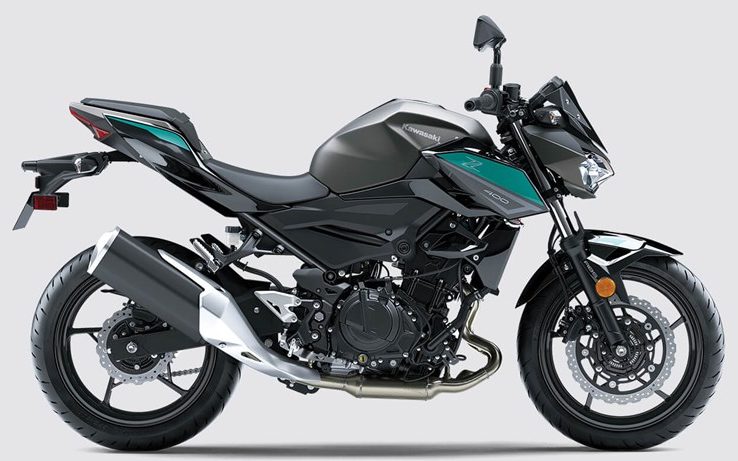
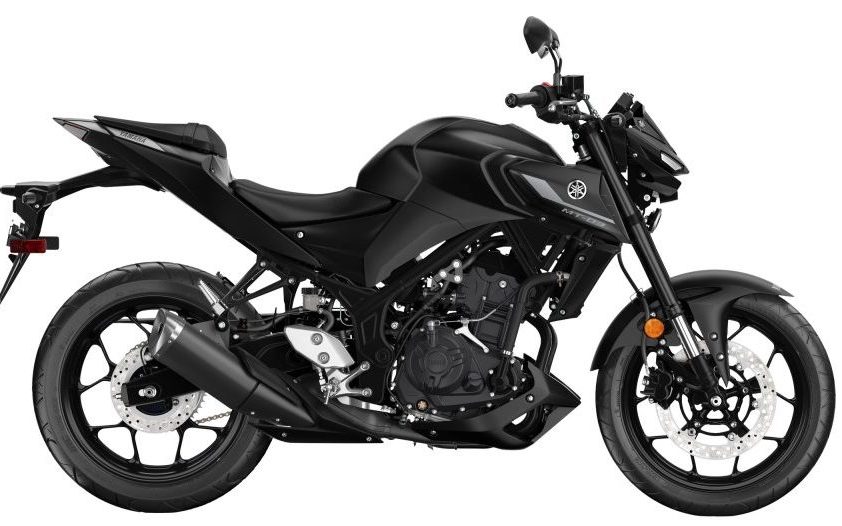
Intermediate
Intermediate sport nakeds are in the 500-800cc range with two or three cylinder engines and relaxed ergonomics. Similar to sport bikes, a beginners should probably avoid aggressive, four cylinder sport nakeds.
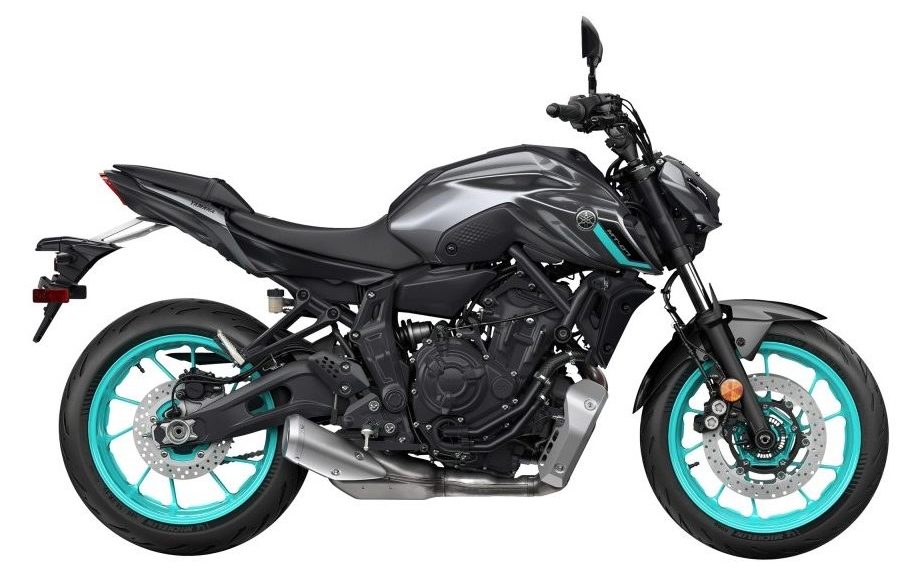
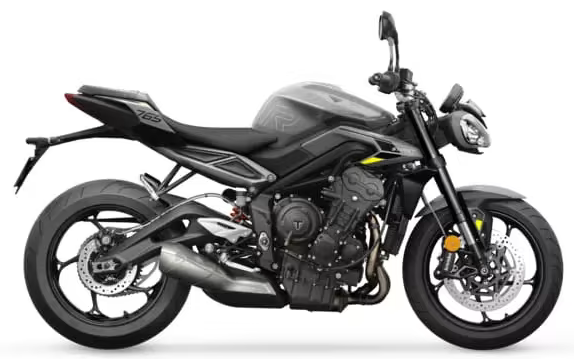
Sport Heritage / Cafe Racers
Often used interchangeably, Sport Heritage & Cafe Racers are the same idea as sport nakeds, but with vintage styling. Generally a sport heritage would fall somewhere between a retro standard and a sport naked with a mostly upright seating position, while cafe racers are more similar to classic race bikes with aggressive, forward-leaning riding positions.
This is another sub-category that generally lacks a good entry-level, but confident beginners could start on a sub-800cc sport heritage or cafe racer.
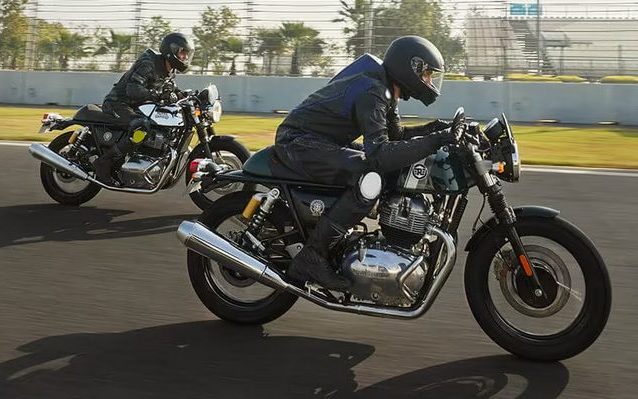
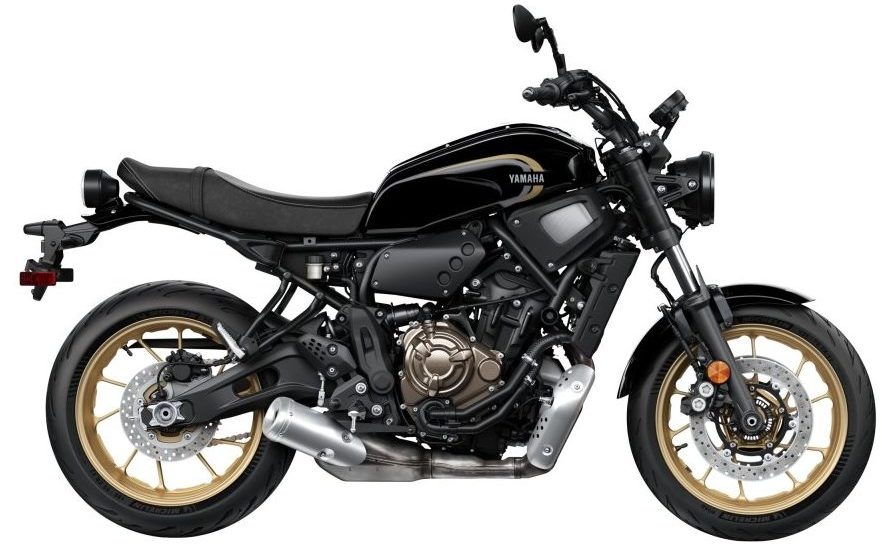
Scramblers
Designed to be throwbacks to classic off-road bikes, scramblers are a crossover of retro standards and dual sports. They have single or twin cylinder engines and upright seating positions, but tend to have more suspension travel, more ground clearance, and bigger wheels compared to standards (leading to higher seat heights). If you like the idea of a dual sport or adventure bike’s versatility but hate their aesthetics, scramblers can be a good choice.
Entry Level
Entry level scrambler will be in the sub 500cc range and have a relatively low weight & seat height. To keep weight low, consider a model with a single cylinder engine.
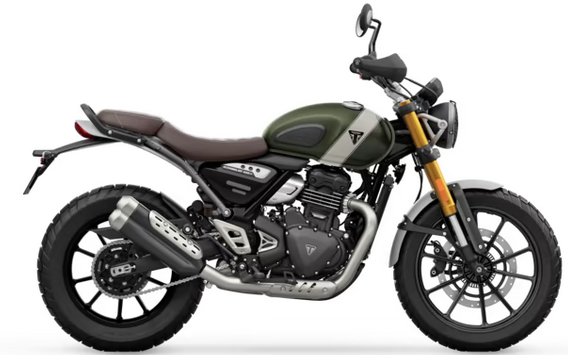
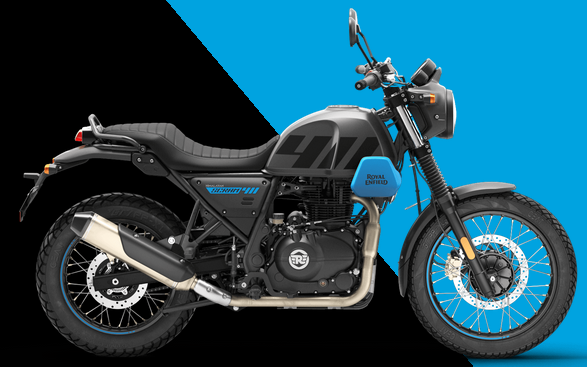
Intermediate
An beginner-friendly intermediate scrambler will likely have an engine in the 500-900cc range, and seat heights will start to increase compared to entry-level models.
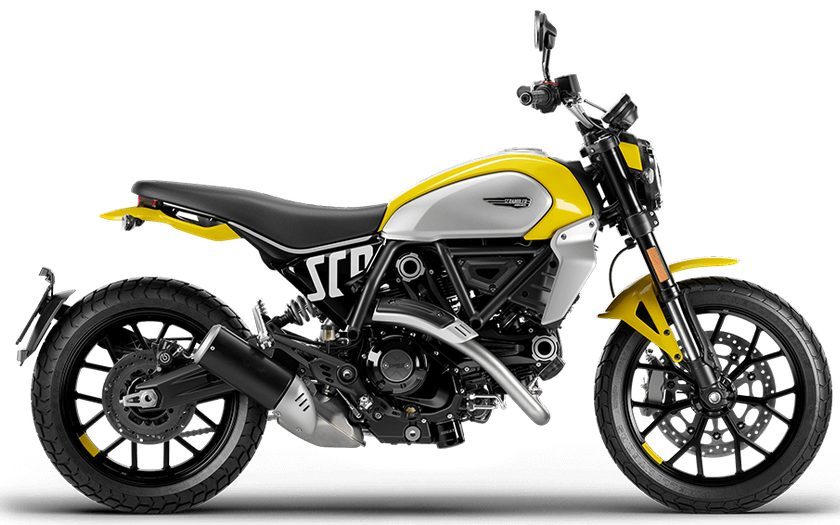
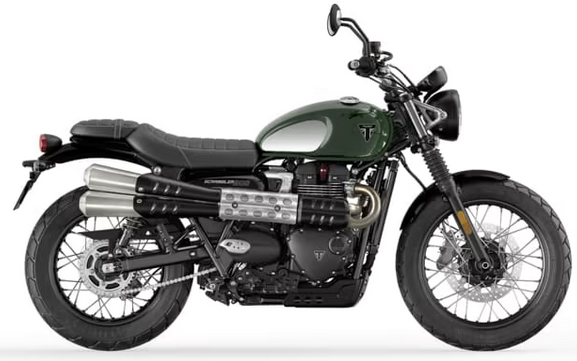
Supermoto
Supermotos are basically dual sports with sport bike wheels. They are incredibly agile on the street, and make phenomenal bikes for urban environments. Manufacturers will often stiffen the suspension and beef up the brakes to give them better on-road performance, but they’re otherwise the same as the dual sports. Because of that, I’ll avoid repeating everything I said in the dual sport section — just be aware that you should be careful of the race-oriented supermotos based off the race-oriented dual sports (KTM, Husqvarna, etc.) when shopping, because engine sizes will be in the same range.
It’s also not uncommon for dual sport riders to own a set of supermoto wheels (and vice versa) and swap between them, depending on the types of riding they’re doing.
